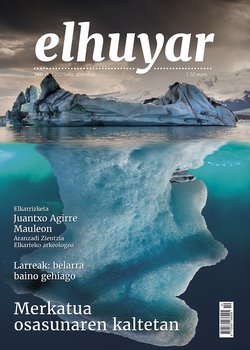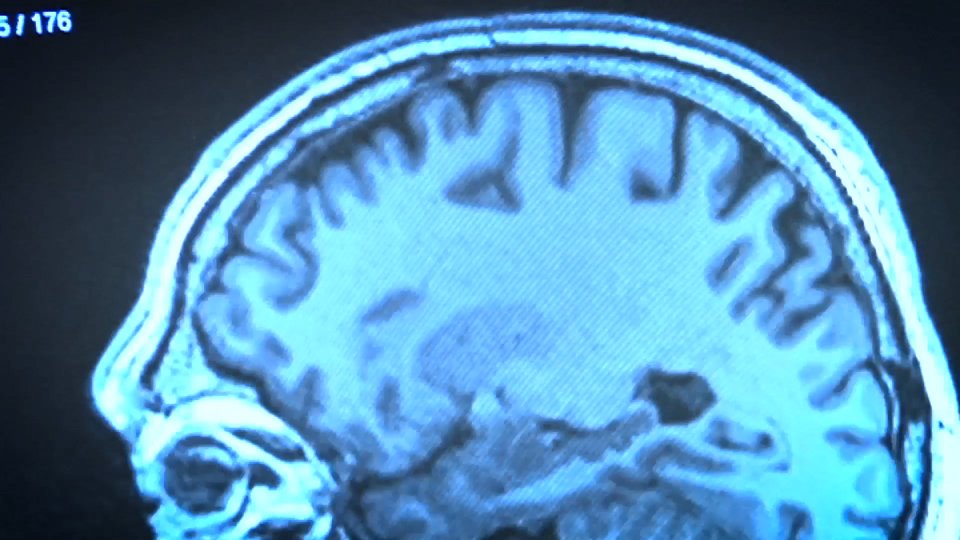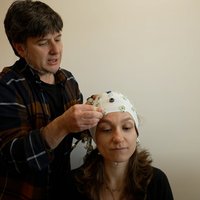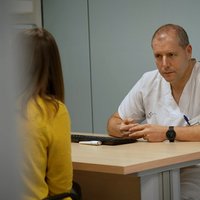Seminary of Bergara: Excellent, rich, looking forward
Iñaki Leturia; Elhuyar Foundation: It seems that it has always been there, but it hasn’t always been there, and not like that.
Xabier Aranburu; Municipal Museum Technician/ Museologist: So, the first indication we have to give is that this seminary does not mean that this was a seminary, and the second is that the institution is 500 years old. If this façade dates back to the 19th century, in previous centuries the institution and the building also had another
façade. Iñaki Leturia; Elhuyar Foundation: And another story that we're going to know now.
Seminary comes from the Spanish semilla, seminary or seminary. So this has been a place to educate valuable people in science. What gave him this sense was the count of Xabier Maria Munibe Peñaflorida, the first director of the seminary. All those who have directed the Seminary of Bergara have followed the path that he began, more or less. The 18th century, the Age of Lights. The Enlightenment was in force, reason and experimentation were gaining ground in Europe and the world. Carlos III.ak expelled the Society of Jesus from Spain, and since the 16th century it was the Jesuit school to leave the building empty: The site was owned by the Association of Friends of the Basque Country, led by Peñaflorida. 1776. The Royal Seminary is underway.
Iñaki Leturia; Elhuyar Foundation: Who are these? Xabier
Aranburu; Municipal Museum Technician/ Museologist: My colleague, he (Rosa) is in charge of the Department of Tools in Physics and Chemistry, a very important area, and he is in charge of the Section of Zoology and Human Anatomy, also important, and among the three of us we form the team to carry out this project and ultimately make it a
museum. Iñaki Leturia; Elhuyar Foundation: Where do we start?
Xabier Aranburu; Municipal Museum Technician/ Museologist: With the tools of physics and chemistry, and Rosa will teach you.
Xabier Aranburu; Municipal Museum Technician/ Museologist: The Enlightenment and what the Count of Peñaflorida wanted to do here was a primary education center, because they thought that the expansion of education in society was good for the development of the people, and they also wanted to promote the so-called useful sciences of chemistry, mineralogy, metallurgy... and here, as we know, in 1783 they discovered a new chemical element, namely tungsten, and an effective method of making platinum malleable. More than one has said that, given the current parameters, it would be like NASA or a first-class research center.
Iñaki Leturia; Elhuyar Foundation: Rosa, this is not a museum yet, but there is a walk through history, right?Rosa Errazkin; Technician / Chemist
of the Municipal Museum: Yes, this is a collection of scientific instruments, material deposited by different institutions in the seminary of Bergara. This piece, for example, dates back to the 18th century, a dilatometer. The lighter is missing, but the expansion of metallic rods was measured by heat here
Iñaki Leturia; Elhuyar Foundation: Did they stretch?Rosa Errazkin;
Technician of the Municipal Museum/ Chemist: That is, it was being expanded, and by operating this mechanism, this expansion was being measured here.
Iñaki Leturia; Elhuyar Foundation: And perhaps the Elhuyans used this? Rosa Errazkin; Technician
of the Municipal Museum/ Chemist: Yeah, it's a piece of that time. This other scientific work belongs to the nineteenth century, it is called Meloni’s bank, and it was to study, work, etc., the rays of the heat. At that time, they were purchased in places where scientific instruments were produced and marketed in Europe, for example in Berlin, London, and especially in
Paris. Rosa Errazkin; Municipal Museum Technician/ Chemist: This is an electrostatic machine. Static electricity was collected there and a tremendous discharge was achieved between two conductors.
Iñaki Leturia; Elhuyar Foundation: so, in both? And did the rays originate here?Rosa Errazkin; Technician
of the Municipal Museum/ Chemist: Yes, the discharges that were obtained here were so powerful that it was a typical maine used to generate X-rays.
The 19th century was turbulent from the beginning. Wars, invasions, rebellions,... Despite the problems, that time was not sterile. In the period of calm between the incidents, the restructuring of education began in Spain, thus establishing a single institute in each province. In Gipuzkoa, neither Tolosa nor Donostia/San Sebastián, it was installed in Bergara. The institutes were also important scientific sites for research. He enriched the existing physics and chemistry cabinets, organized the botanical garden, a museum of natural sciences, and the meteorological observatory, the first in the province, in the middle of the century.
Xabier Aranburu; Municipal Museum Technician/ Museologist: In addition to the only institute in Gipuzkoa in the seminary, an industrial school was also installed. The government decided that there would be only four engineering training schools across the state: In Madrid, Barcelona, Seville and the last in Bergara.
One of the consequences of the second Carlist War would be that the Seminary would remain in the hands of the Dominican friars. The new director, Fray Juan González Arintero, was not only a religious man, but also a man dressed in science. It strengthened all areas, but especially enriched the collection of zoos. Arintero was a great follower of St. Thomas' thought; that is, he wanted to show that faith and reason are compatible, but above all he wanted to explain Darwin's theory of evolution from a religious perspective.
Iñaki Irizar; Technician at the Municipal Museum/ Zoo: These animals are pieces of a cabinet created in the 19th century to do
science. Iñaki Leturia; Elhuyar Foundation: These are also tools for doing science. Iñaki Irizar;
Technician at the Municipal Museum/ Zoo: That is, they are tools or tools for doing science. In the 19th century, it should be noted that natural sciences such as zoology and botany are in the inventory phase. The goal then is to find out what species we have, whether the species here are the same or different from those in North America. It is the time of taxonomy, the time of inventory, for which it was necessary to carry out the collection, store the results of the collection in the cabinets and then investigate. This is the witness of
it. Iñaki Leturia; Elhuyar Foundation: You have treasures here too, don't you? Pieces that were alive or that remained only in the collection as the specimens disappeared.
Iñaki Irizar; Municipal Museum Technician/ Museologist: That's right, this is, for example, a cacapo, a New Zealand parrot. Today there are only 80 survivors.
Xabier Aranburu; Municipal Museum Technician/ Museologist: When we started working, it is true that the collection was in a very serious situation. And it can be said without any fear that he was also in danger of losing himself physically. So we have done an incredible job of recovering, conserving, preserving, researching and restoring all this, and today we have the collection ready to make a museum with it.
Buletina
Bidali zure helbide elektronikoa eta jaso asteroko buletina zure sarrera-ontzian











